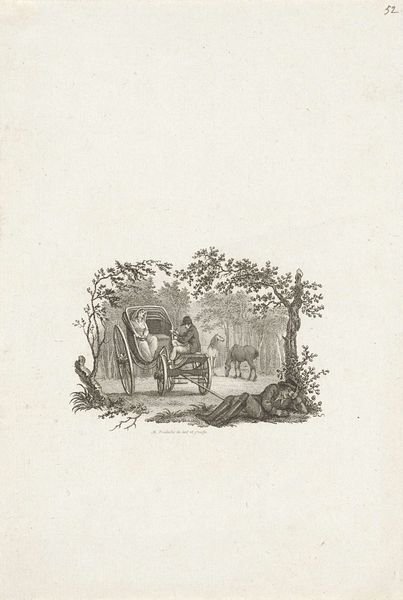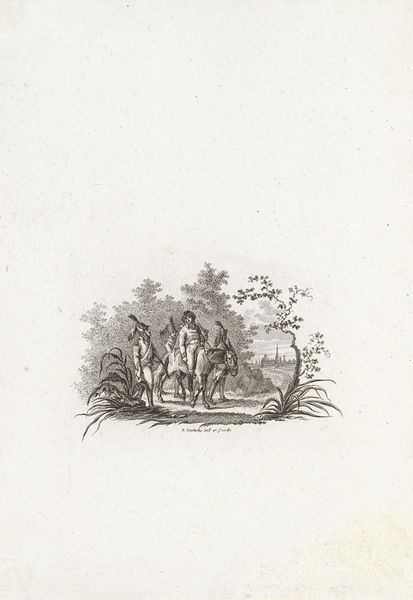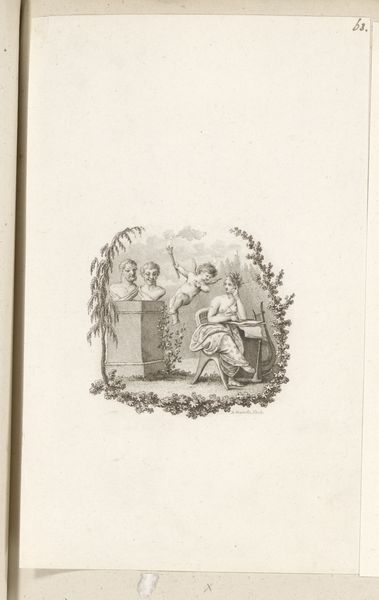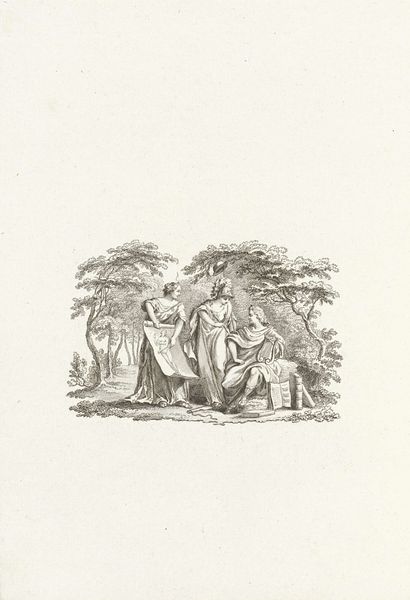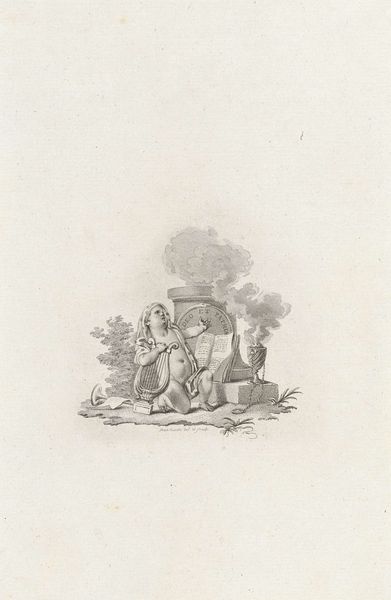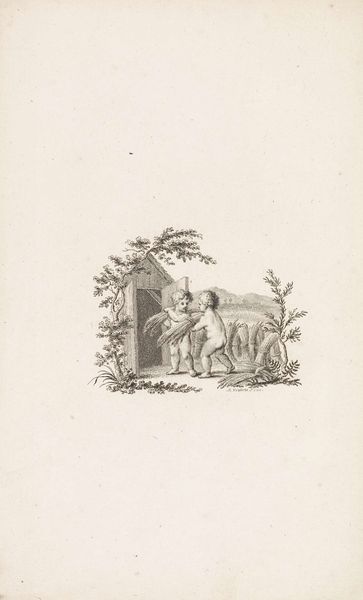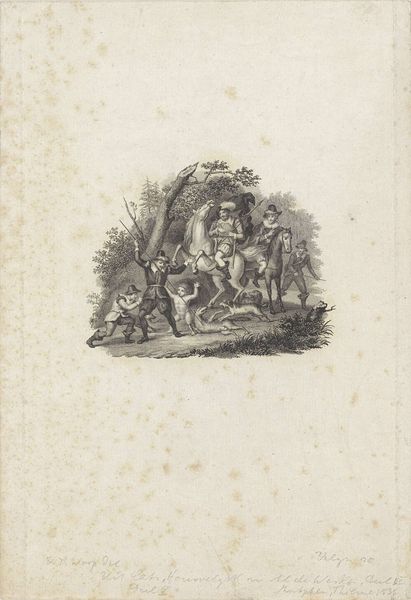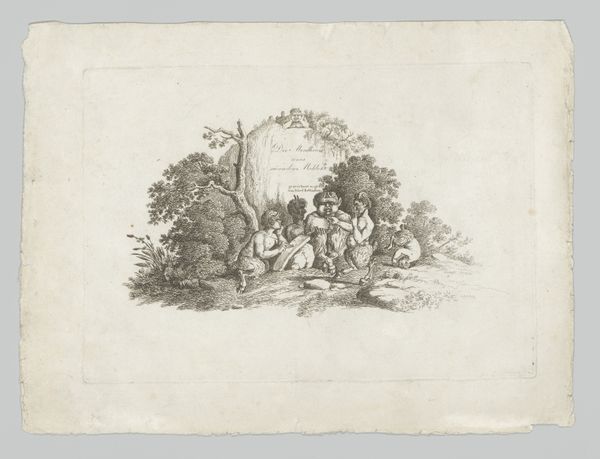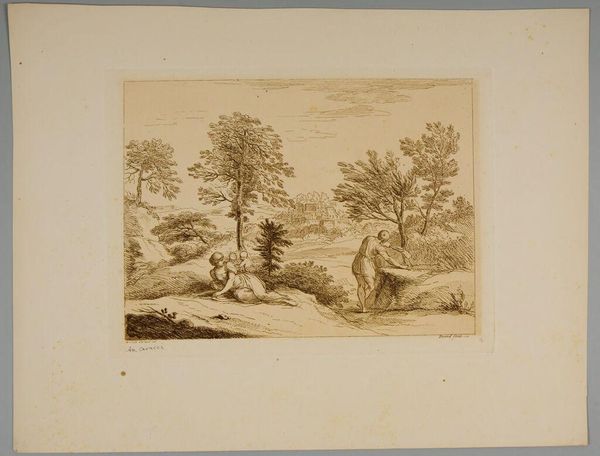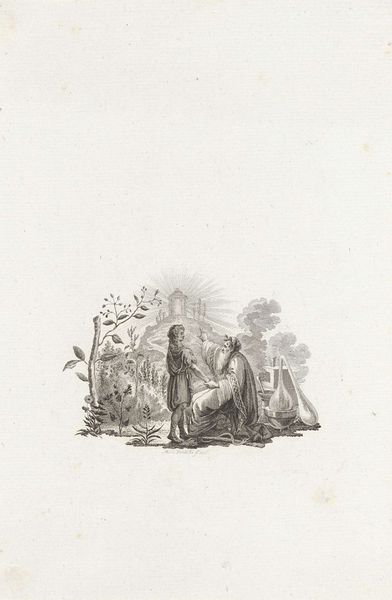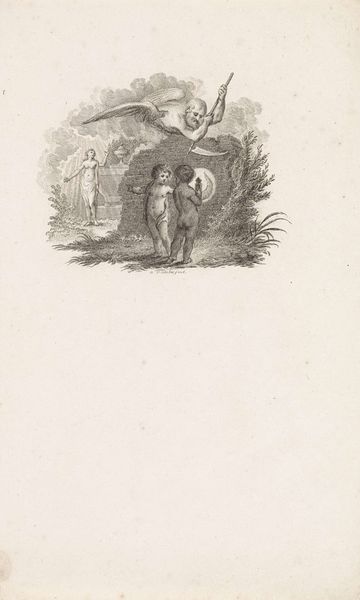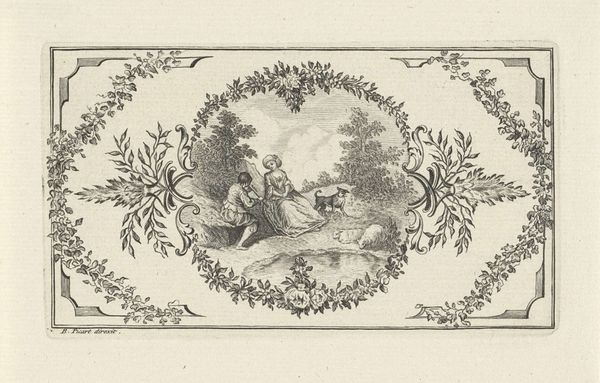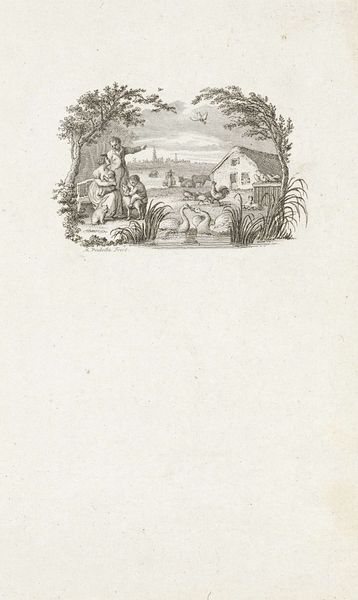
Allegorie met een buste van de Franse dichter Jacques Delille 1771 - 1816
0:00
0:00
reiniervinkeles
Rijksmuseum
drawing, print, engraving
#
drawing
#
neoclacissism
#
allegory
# print
#
landscape
#
history-painting
#
engraving
Dimensions: height 253 mm, width 163 mm
Copyright: Rijks Museum: Open Domain
Curator: Looking at this delicate print titled, "Allegorie met een buste van de Franse dichter Jacques Delille," produced sometime between 1771 and 1816 by Reinier Vinkeles, my initial thought is pastoral serenity. Editor: Indeed, the image evokes a calm, almost wistful mood. The central figure, perhaps a muse, sits serenely amidst an idealized landscape, the textures feel so subtle, considering the process used to create it. It’s hard to separate it from the cultural landscape of late 18th century classicism, especially when viewing it through a modern intersectional lens. Curator: Absolutely, the symbols here resonate with the era's emphasis on virtue and artistic inspiration. Note the bust of Delille himself, paying homage to his poetic achievements. And then, a cupid-like figure stands playing the harp nearby... these motifs have accumulated meanings throughout time, particularly linked to artistic expression. Editor: That’s a great observation. The figure’s relationship to music ties in strongly with the conventions of representing poetics, doesn’t it? How would you place Jacques Delille, within the context of that artistic scene? The themes of idyllic pastoralism feel distinctly coded... Curator: Delille was a prominent figure during a time of considerable societal shift, particularly within the French intellectual class. Positioning him through an allegorical artwork raises several questions of artistic license and purpose in the depiction of authority during such periods. In the French-Dutch sphere during this time, it is worth studying his social ties when assessing these engravings. Editor: That’s true, a complex figure deserves that kind of consideration. I wonder how contemporary audiences engaged with the image's subtle messages of patronage, power, and artistic value. Did these idealized representations genuinely reinforce or perhaps subtly undermine established social norms? Curator: A fantastic question. The very presence of these engravings indicates an effort to promote and cement the subject's legacy, underscoring not only his cultural impact but also that of his elite networks, while shaping what came before with neoclassical conventions. I believe we can perceive these artworks as cultural currency in their own right. Editor: Thank you, I have a stronger perception of both this piece, and that critical perspective. It enriches one's appreciation so much more. Curator: Precisely, and in considering how artworks navigate evolving understandings of representation, this work reminds me there’s so much value in continual revisiting and reframing.
Comments
No comments
Be the first to comment and join the conversation on the ultimate creative platform.
